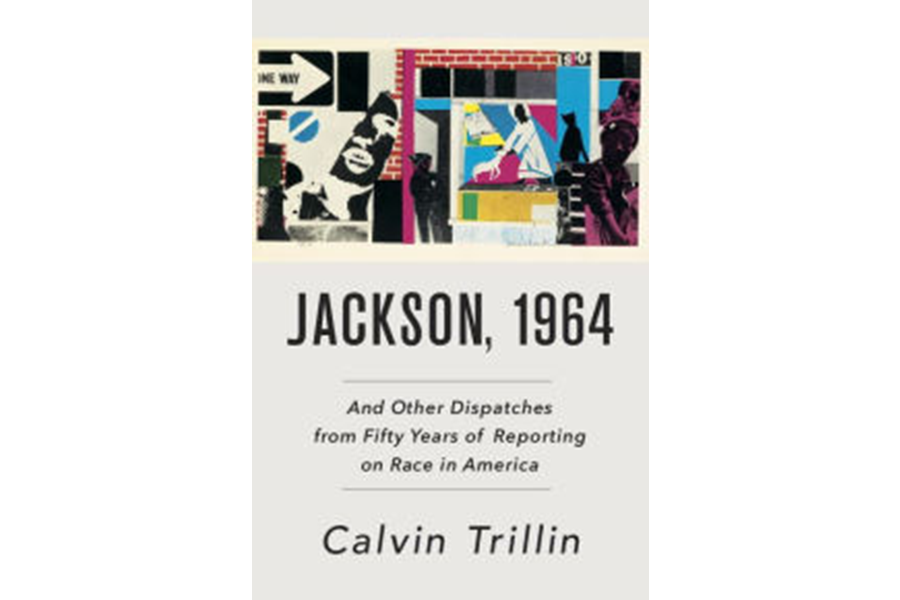'Jackson, 1964' sheds light on some very dark chapters of US history
Loading...
Calvin Trillin was born and raised in Kansas City, Mo., when virtually all white Americans, North and South, were either oblivious to or comfortable with segregation. He graduated from Yale University in 1957, never once wondering why there was but a handful of black students among his thousand-plus classmates.
His education on race was just beginning.
After serving in the US Army, which had been desegregated by presidential fiat only a decade earlier, Trillin went to work as a journalist, soon landing in Atlanta, covering the Jim Crow “seg beat” for Time magazine.
Jackson, 1964: And Other Dispatches from Fifty Years of Reporting on Race in America is a collection of pieces that the author penned for The New Yorker, where he has been a contributor since 1963. The book, the latest of more than two dozen that Trillin has written, includes a brief introduction and welcome updates following each of the 16 installments.
These unsettling tales, elegantly written and wonderfully reported, are like black-and-white snapshots from the national photo album. They depict a society in flux but also stubbornly unmoved through the decades when it comes to many aspects of race relations.
In “Remembrance of Moderates Past,” published in 1977, Trillin skewers the reconstructed “smart seg” set in the South, individuals who in the 1960s had worked to stall integration through legal and political wiles rather than with bombs and billies. A decade later, many of these same folks were making themselves over as beneficent moderates who had been toiling “behind the scenes” for racial equality. Trillin counts among this number Griffin Bell, US attorney general under President Jimmy Carter. Trillin deftly sets the record straight:
“ ‘I keep hearing about white people who say they’ve been working behind the scenes,’ a black lawyer in New Orleans told me during the desegregation of the public schools there, in 1960. ‘Yes, sir,’ he said. ‘It must be getting mighty crowded back there, behind the scenes.’ ”
The diverse portfolio herein includes profiles of people who seem stranger than fiction. G.T. Miller was a former Alabama Klansman who resisted pressure to fire two black employees who were bent on integrating the local school. In the same sentence Miller could integrate his newfound passion for better race relations with the n-word.
When a resulting Ku Klux Klan-sponsored boycott devastated his business, Miller eventually laid off the two men – not, he insisted, because he wanted to or was told to, but because he had to. A Christian who loved his enemies, Miller did take a moment to write to the boycotters to tell them the men had been let go.
The story of Victoria Delee is stranger still – and more hopeful. She recounted to the author an incident when she was knocked out cold for not hoeing cotton to the satisfaction of her white supervisor, who then insisted, when she came to, that her grandmother finish the beating. Her response to such an upbringing was straightforward. She told Trillin of her initial plan to change things in Dorchester County, S.C.: “And the first thing I had in mind: I meant to kill up some white people.”
The arrival of Delee’s first child and her minister steered her toward a more New Testament approach. First she registered to vote, which wasn’t easy in the early 1960s. Then she lobbied for equal funding for the local black school. In 1965, when equality wasn’t forthcoming, she registered her children at the white school, where they were beaten and harassed by classmates.
But slowly things improved. This was one determined woman. She registered others to vote and set up a day-care center. Then she ran for Congress. She didn’t win, but her daughter, her firstborn, became the local registrar of voters.
The stories herein are not simply Southern. Trillin reports on racial matters as recently as 2008 on Long Island, N.Y., and in Newark, N.J.; Boston; Denver; Provo, Utah; and Oshkosh, Wis.
But there was nowhere quite like Mississippi in the years before and after 1964, when hundreds of civil rights workers tried to crack the hardest racist nut of all. The taxpayer-funded State Sovereignty Commission, established in 1956, was entrusted with preserving segregation, of defending the great “Wall of Never.” Its duties included distributing the license plate numbers of cars driven by civil rights workers, Trillin writes, including the one that Michael Schwerner, James Chaney, and Andrew Goodman rode in before they were murdered.
“Jackson, 1964” records an important, albeit shameful, chapter of American history. The grace Trillin brings to his job makes his stories all the more poignant.
David Holahan regularly reviews books for The Christian Science Monitor.






